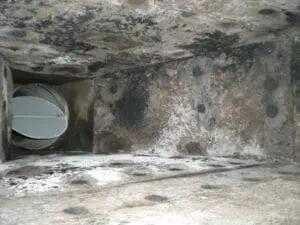It has already been several months into the pandemic, but the research regarding the unprecedented COVID-19 is still incomplete. The uncertainty of the source of transmission is the origin of the argument of whether duct cleaning can actually reduce the probability of coronavirus spread or not.
⦁ Government guidelines to duct cleaning
The microscopic airborne particles of the infamous COVID-19 can remain suspended in the air for half an hour until it drifts down lingering there for hours, depending on the surface. Such small particles called aerosols quantify below 5 microns. The cough generated aerosols are found to be immediately respirable. Though there are no indicators of the airborne particle routing through ducts, the Indian Society of Heating, Refrigerating and Air Conditioning Engineers (ISHRAE) has issued guidelines for disinfecting air ducts, inclusive of “Airborne Infection Isolation Rooms” for COVID patients.
The safety precautions for our front line healthcare workers have been holding primary importance since they are highly exposed to the virus-laden airborne particles. The ensured protection of our healthcare workers and reduction in transmission rate can be made certain only if the particles of coronavirus do not leak out of the isolation wards, most precisely through centralized air conditioners. ‘The exhaust air is most likely to contain particles carrying a viral load’, the ISHRAE postulated. The further procedure included the reduction of indoor dust level for the diminution of this source of COVID 19 transmission. While the workplaces with central air conditioning set-up are advised to be served by re-circulatory HVAC systems for thermal conditioning, on the domestic aspect, homeowners are encouraged to clean their ducts through proper measures like negative pressure. Bipolar ionization units can add up to the previous alternatives.
⦁ Contradicting HVAC associations
However, REHVA, the European federation of HVAC associations, has disagreed with the significance of duct cleaning for mitigation in this viral spread. They have argued that the filters attached to the HVACs do not let the virus loaded particles to pass through it. While at the same time, the National Air Duct Cleaner Association (NADCA) has been advocating for the inclusion of its cleansing services in the essential business category since the beginning of the pandemic.
⦁ The scrutiny
One of the widely discussed cases of the transmission of the virus loaded particles through ducts is a restaurant in Guangzhou, China. Incomplete research resulted in the conclusion that the corona virus particles were spread by “strong airflow” there. It overlooked the fact that the virus is airborne and can remain suspended for hours and may transmit even after a certain period of time. The further analysis supported the same.
“Good respiratory hygiene prevents the spread of COVID-19”, quotes WHO. Improper ventilation can prove to be the lone-wolf in the transmission of the corona virus particles. Though there is no proven fact that duct cleaning can help reduce the risk of transmission of coronavirus, riding out of the storm before it hits us is a salutary substitute.
Learn about our top-rated Air Duct Cleaning Equipment.

